Valuations
Chinese Art Fair Dynamo Bao Yifeng Puts His Faith in the Art Ecosystem
We spoke to the founder of Art021 Shanghai Contemporary Art Fair about what he values most in art and life.
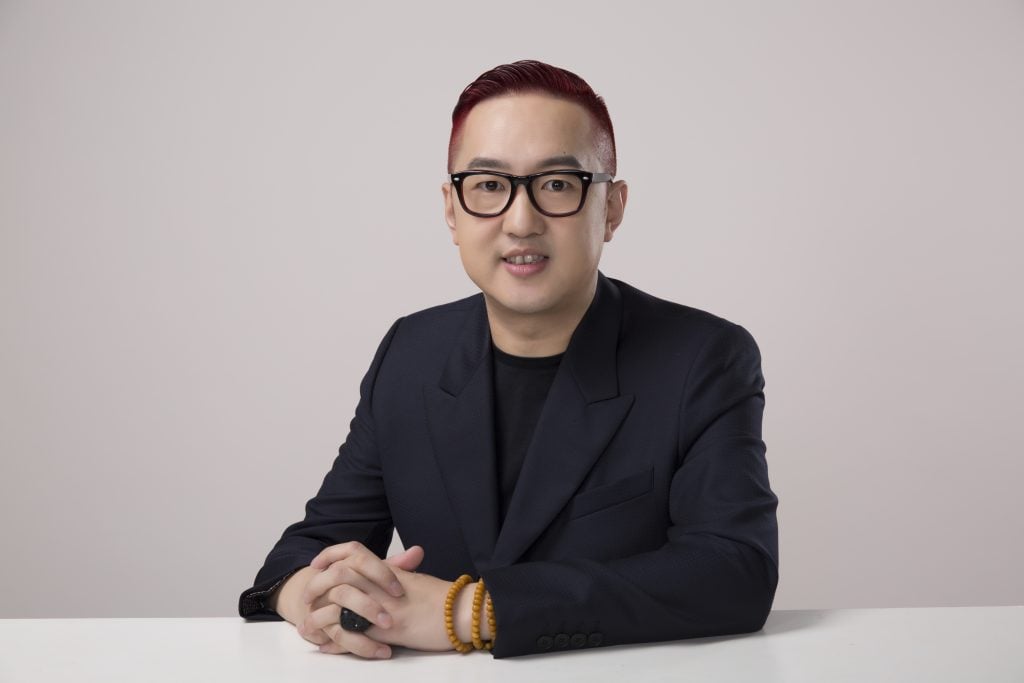
We spoke to the founder of Art021 Shanghai Contemporary Art Fair about what he values most in art and life.

Cathy Fan

So much of the art world orbits around questions of value, not only in terms of appraisals and price tags, but also: What is worthy of your time in These Times, as well as your energy, your attention, and yes, your hard-earned cash?
What is the math that you do to determine something’s meaning and worth? What moves you? What enriches your life? In this new series, we’re asking individuals from the art world and beyond about the valuations that they make at a personal level.
Bao Yifeng, recognized as China’s leading public relations expert in the domains of luxury brands, entertainment, and art & design, holds the illustrious title of “China’s No.1 Man of PR.” Recently, he embarked on a whirlwind tour, covering four cities in just one week. His trips align with the upcoming 11th edition of ART021 Shanghai Contemporary Art Fair, the art fair he co-founded 11 years ago, which opens today.
Bao’s career in public relations, particularly in the luxury sector, began in the ’90s when these fields were still nascent. In 2002, he founded Element Liquid and later joined Activation Group in 2013. Driven by his profound passion for art, he, alongside Kylie Ying and David Chau, established ART021 in Shanghai in 2013. In 2018, they launched JINGART, another prestigious art fair in Beijing. Building on this success, in 2021, DnA SHENZHEN was launched.
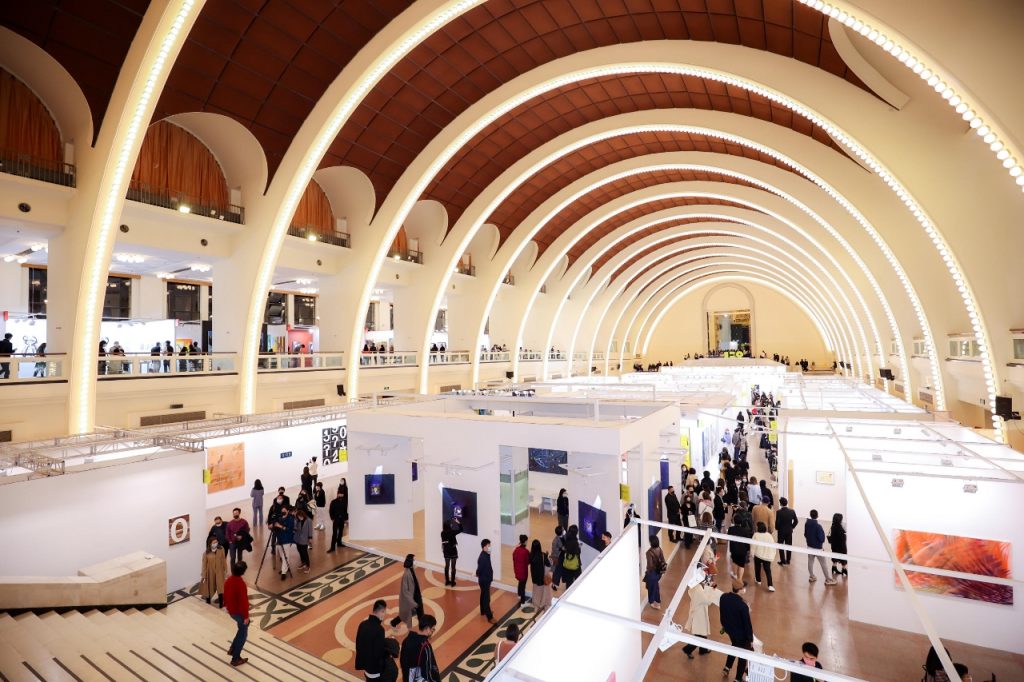
2022 ART021 Shanghai Contemporary Art Fair. Image courtesy of ART021
However, before he emerged as a prominent art promoter, Bao was an art collector at heart. His love for art traces back to the mid-90s when Swiss gallerist Lorenz Helbling founded ShanghART Gallery. Bao purchased his very first artwork from the gallery, igniting his lifelong journey as a collector. Known affectionately by friends as “Shanghai Bao,” this native of Shanghai has transformed his home into a veritable treasure chest, a kin to a boutique museum, where art graces every corner, from corridors to rooms, in an enchanting tapestry of Shanghainese culture.
Amidst the upcoming whirlwind of art fairs, we caught up with Bao, allowing him to share his profound insights into what he values in both the world of art and life.
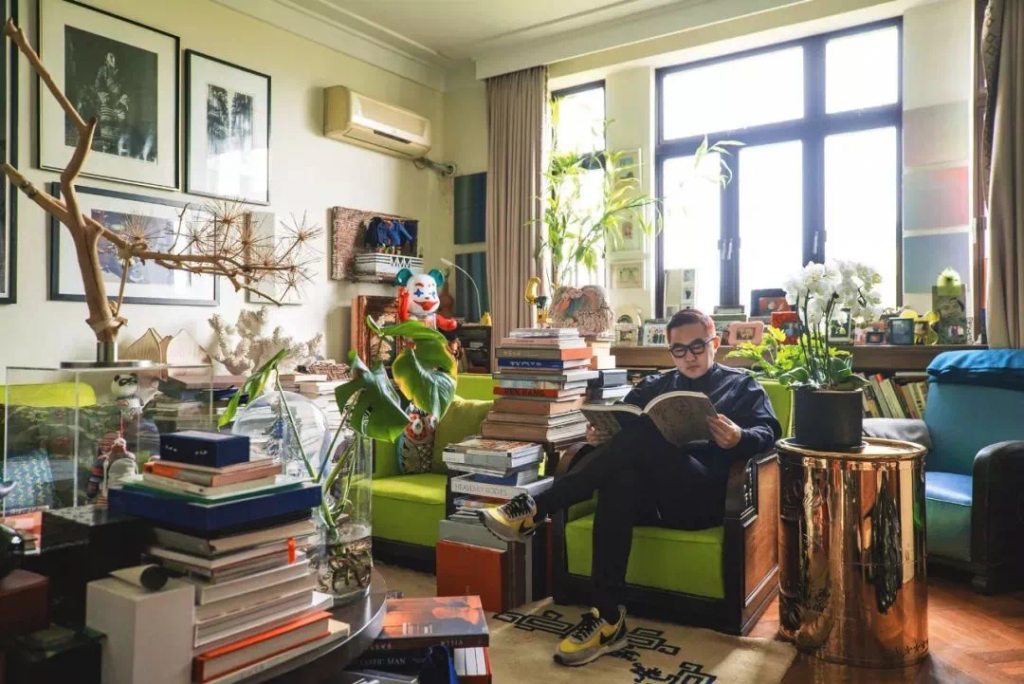
Bao Yifeng at his home.
Could you elaborate on how you position these three distinct art fairs—ART021 in Shanghai, JINGART in Beijing, and DnA SHENZHEN—in the context of the unique art scene and collector communities of each of the major Chinese cities?
This is a question that everyone is curious about. There are frequent daily flights between these major cities. It’s actually realistic to have a day round trip, so there’s a lot of mobility for people. So it’s hard to say whether a collector will always live only in Beijing or not. We have done a different positioning of the consumption habits of collectors in the three cities, which is also equivalent to helping collectors in that city. ART021 is a purely contemporary art fair, while Beijing has spliced in some classic elements—for example, we have previously asked galleries to bring in works from the 90s. In that case, the value of the works was relatively high. We took into account Beijing’s previous major auction records and the city’s tradition of collecting antique paintings and calligraphy. Many collectors in Beijing are now turning to contemporary art. Shenzhen is a brand new city, so we named the fair DnA—meaning design and art—deliberately putting design in front of art. We also researched various economic data such as GDP and real estate prices.
In Shenzhen, some house prices have exceeded RMB 300,000 per square meter (appx 40,100 USD). In such an expensive house, the owner will definitely need some finest furniture or art collections. This means that design is at a central position. At the same time, there is a very interesting phenomenon in the city: many designers or architects are also collectors themselves and help their guests to acquire art. So this group of people is very important to us.
As the founder of these art fairs, you’ve collaborated with numerous galleries. From your perspective, what qualities do you consider most crucial in a gallery owner within the context of the art world?
I think it’s probably pretty much the same for anything I do: to have a very keen eye and to be observant. As a gallery owner, you need to be able to tap into the resources of new artists. For example, if a person walks into the booth at the fair, you have to be very keen to determine whether this person will be a potential collector, or how to get him or her to collect, start to build a relationship, or stay connected on WeChat.
A pair of good eyes, as well as the ability to adapt to the scene, are relatively important.
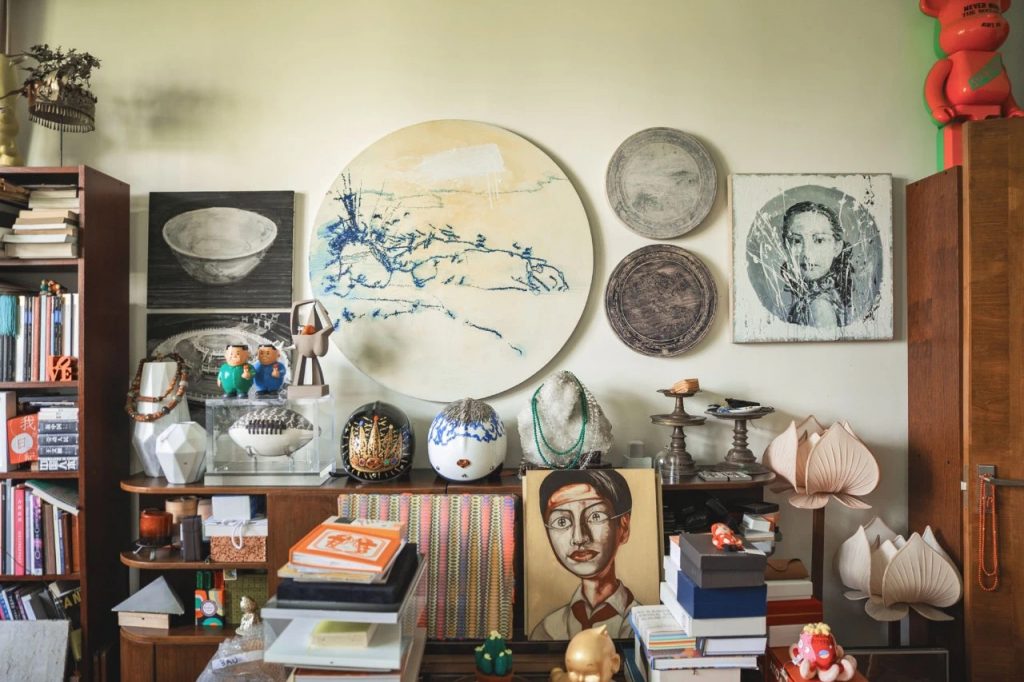
Bao’s collection displayed at his residence
Which artists have grabbed your attention lately?
The art industry has been constantly populated with a variety of artists, but my attention is drawn to specific exhibitions or works. Recently the Museum of Art Pudong(MAP) in Shanghai has ongoing exhibitions of artists Liu Heung Shing and Zeng Fanzhi, so the works of these two artists have been on my mind.
Art has also received a lot of attention from the outside world for producing many sky-high prices. How do you, as an experienced collector and creator of art fairs, see the value of art?
The value of art should come from a complete system, rather than just one person one thing, or one channel. Value fluctuates a lot—we now see some sky-high price works which might be just the value at that moment. This doesn’t mean it’s the eternal value of the work. With the help of many tools, people can approach the value system in the art world which factors in many considerations.
For me, collecting artwork, I perceive its value very personally. It’s more like a day-to-day loving. Art can make me find respite from the outside chaos as I am always so busy with work. And you know I am very lucky that some of my artist friends have made works specially for me, like portraitures. I see them as a deep connection with the people I care about.
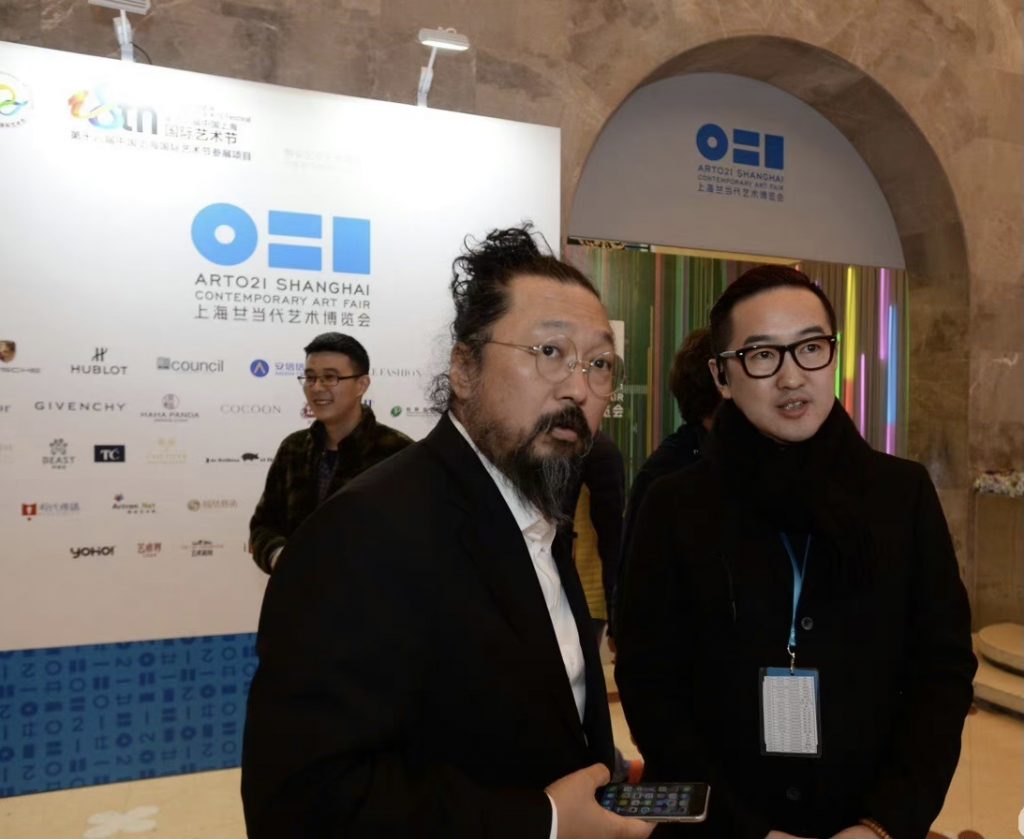
Bao Yifeng with artist Takashi Murakami at ART021 2016
What makes you feel like a million bucks?
The most cherished word is “qing” in Chinese (情), which means love, affection, or passion. This word encompasses family, friendship, and love. I think this word should represent what I cherish the most.
What is something small that means the world to you?
A grain of rice or a drop of water, I think it’s something we can’t live without that keeps us alive. Nowadays some artists use a grain of rice to create works. Water is also a topic of concern for many artists. Especially at this time, when the world is unstable or at war, these two things are especially important.
What’s been your best investment?
I think maybe in 2013 after I merged the company with my current group, it was a good development from the previous PR company level. In addition, I was able to create ART021 with Kylie and David after I was dragged out of a lot of business, so the decision I made in 2013 was a very good investment for me in my life.
What is the last thing that you splurged on?
As always, buying art.
What would you buy if you found $100?
I might invite a friend for a coffee and talk about the latest exhibitions we’ve seen or the latest works in our collection, or anything interesting. Actually, my life is inseparable from art now, or some of my life is inseparable from luxury.
What do you most value in a work of art?
Visual affinity is very important, whether it attracts you when you see it, or whether there are various kinds of colors, forms, or abstractions in it, whether it attracts me or impresses me.
What do you think is your greatest asset?
All my friends. Whether it’s the fashion world, the art world, or the entertainment world, including all the people who have helped me on organizing the fair. I feel that they are my biggest asset, if I didn’t have them, it might be hard for me to do what I’m doing now.
Because everything I do is related to people. The two biggest customers of art fairs, gallerists and collectors, are just people. As for the PR company, I also deal with various people such as the media or clients. So I think the biggest asset is people and friends.
What do you aspire to?
I’ve come to a ceiling position in my current job. But we still need to make some different breakthroughs, and at the same time make some flexible adjustments in what we do in response to changes in the market. Today we already have three art fairs, but have Chengdu on the schedule. So in the future, we should also have a new fair in Southwest China. Many people have been asking us whether we will cross the border to do art fairs in other countries. We are also analyzing ourselves dialectically to consider the possibilities in this regard.
More Trending Stories:
Revealed: The Major Mystery Consignors of New York’s Multi-Billion-Dollar Fall Auction Season
Christie’s Pulled Two Works by a Prominent Middle Eastern Artist From Sale After a Complaint